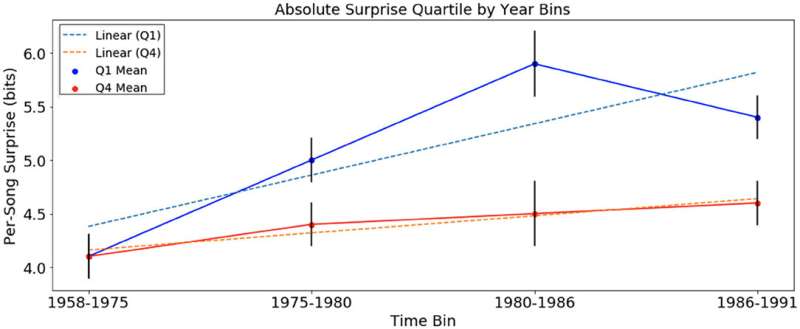
A combined team of researchers from Georgetown University and Secret Chord Laboratories has found that for a pop song to find success on the charts, it needs to have some degree of harmonic surprise. In their paper published in the journal Frontiers in Human Neuroscience, the group describes their study of the nuances of pop songs that found success on the pop charts.
The researchers built on the work of a team that last year found that the right hemisphere was highly involved in musicians still learning how to play jazz music—those that had mastered the musical form, on the other hand, relied more on their left hemisphere. This, the researchers found, was because that was where improvisational skills came into play. The research led the new team to look a little deeper into what goes on in the brains of people that makes them want to hear a song again and share it with their friends—the makings of a hit song. Their work involved analyzing songs that have made it onto the hot 100 charts over the past 70 years. The analysis involved using software the researchers developed that looks for patterns in songs that might explain their catchiness. They found high levels of what they describe as harmonic surprise, when a song suddenly changes or shifts between melodies in major chording in surprising and pleasing ways. The most popular songs, they found, had a high degree of harmonic surprise.
Most songs tend to follow well-known chord progressions—C to F to G, for example, is a very widely used chord progression in country music. But a songwriter may suddenly switch to a chord that is in the same key but is not in the progression. In some cases, it might be a chord listeners have not heard before. Such a quick change is a surprise, and if done in a clever way, the researchers suggest, dopamine is released, giving the listener a feeling of pleasure. And that feeling of pleasure, they add, is what fuels a pop song’s success.
Source: Read Full Article
